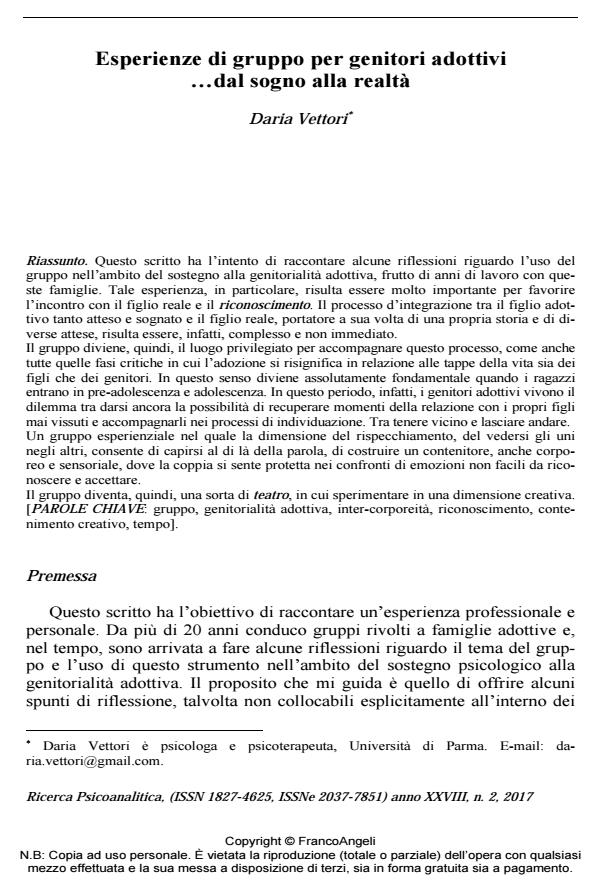Group experience for adoptive parents, from dream to reality
Journal title RICERCA PSICOANALITICA
Author/s Daria Vettori
Publishing Year 2017 Issue 2017/2
Language Italian Pages 13 P. 45-57 File size 154 KB
DOI 10.3280/RPR2017-002004
DOI is like a bar code for intellectual property: to have more infomation
click here
Below, you can see the article first page
If you want to buy this article in PDF format, you can do it, following the instructions to buy download credits

FrancoAngeli is member of Publishers International Linking Association, Inc (PILA), a not-for-profit association which run the CrossRef service enabling links to and from online scholarly content.
This article intends to provide some reflections on the use of groups for supporting adoptive parents, based many years of work in this field. This specific experience proved very important in favoring the meeting with the actual child and its recognition. The process of integrating a much sought for and dreamed of child with the actual child, with its own story and expectations, proved in fact neither immediate nor easy. The group becomes the privileged place for accompanying this process and the critical phases when adoption is re-signified in relation with the stages of life of parents and children. In this sense, it becomes critical when children reach adolescence. In that period, in fact, parents experience a dilemma between recovering unlived moments of their relationship with these children and helping them in their individuation process. Between keeping near and letting go. An experiential group where the dimension of mirroring oneself in the other allows an un-derstanding beyond words, and the construction of a bodily and sensory container where the couple feels protected from troubling emotions that are hard to acknowledge and accept. The group becomes a sort of theater where one can experiment in a creative dimension.
Keywords: Group, adoptive parenting, inter-corporeality, acknowledgment, creative containment, time
Daria Vettori, Esperienze di gruppo per genitori adottivi, dal sogno alla realtà in "RICERCA PSICOANALITICA" 2/2017, pp 45-57, DOI: 10.3280/RPR2017-002004